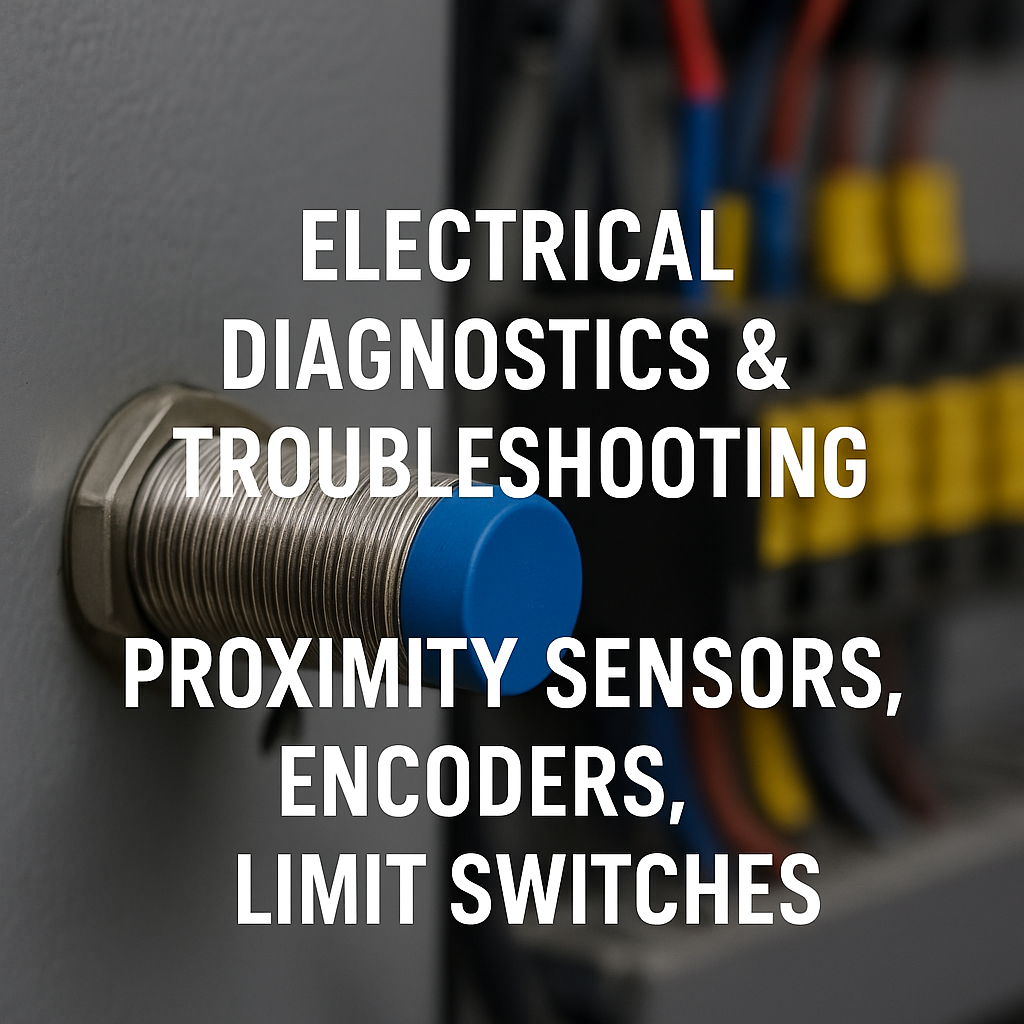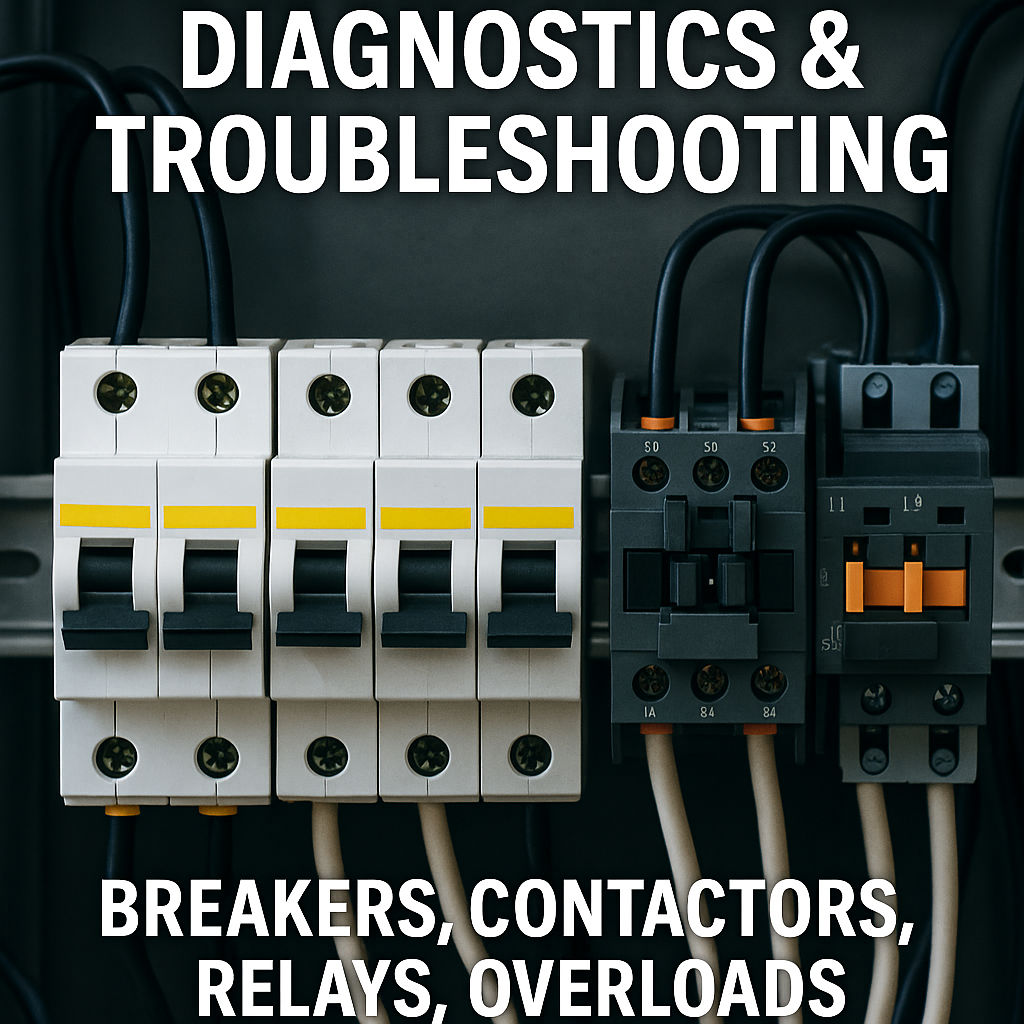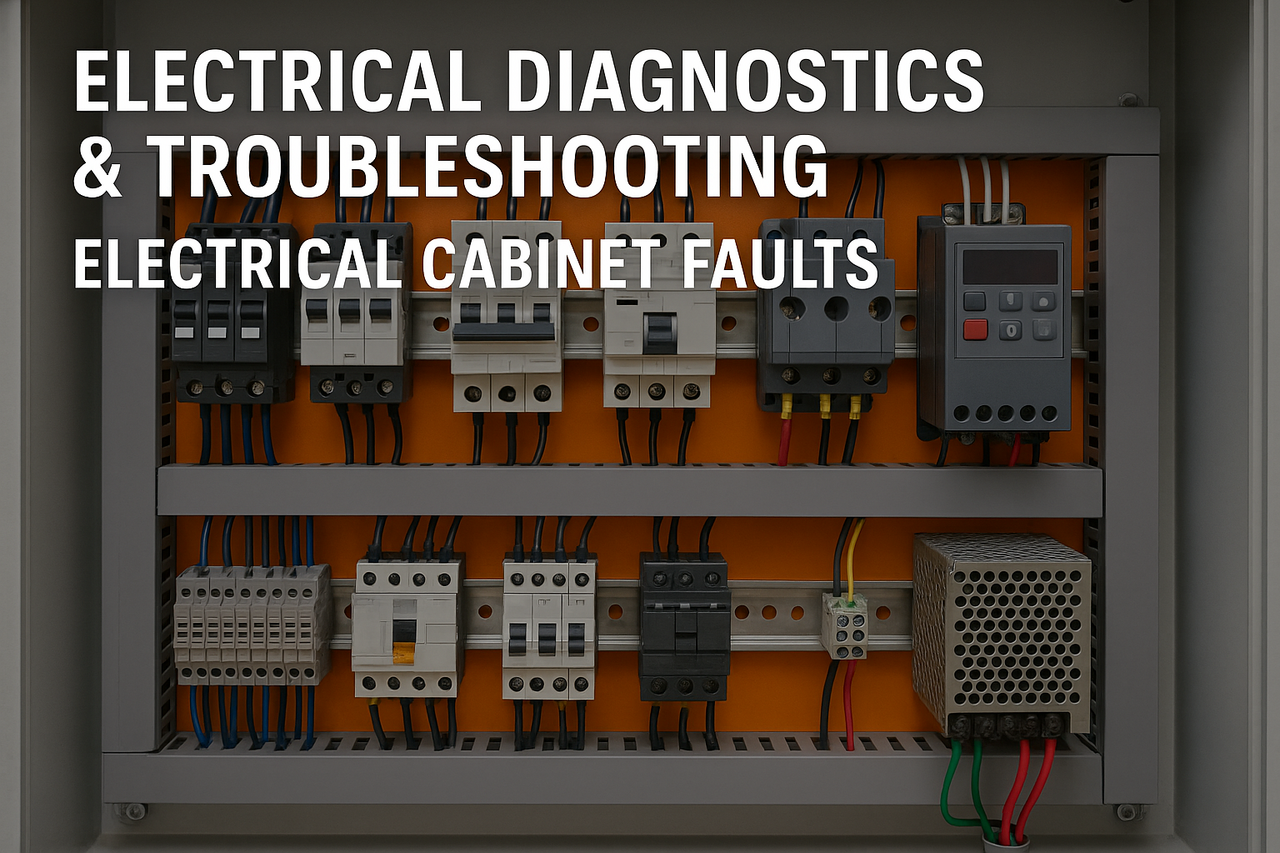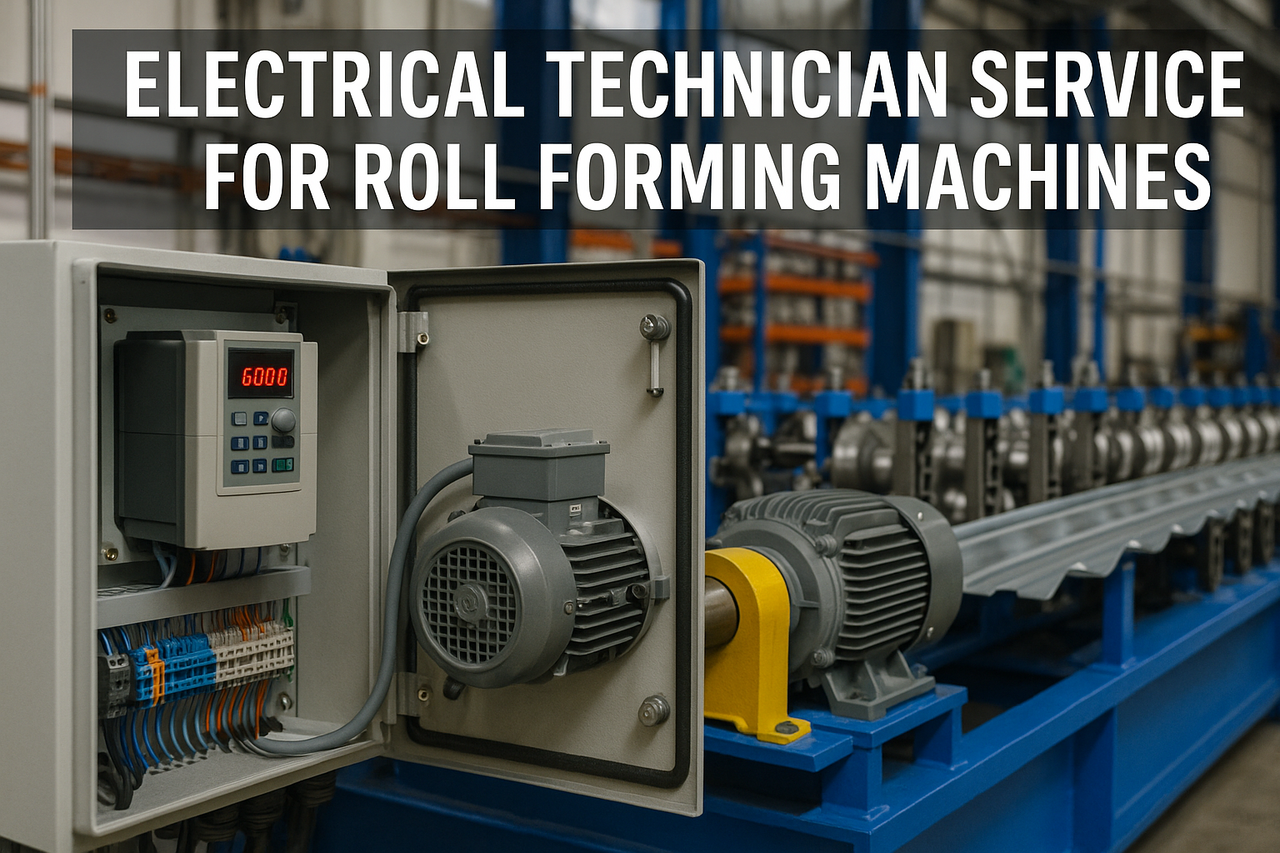
Posted on Sunday, November 16, 2025
Every roll forming machine depends on precision sensors to operate safely and accurately. Proximity sensors, encoders, and limit switches form the “eyes and ears” of the machine, providing real-time feedback to the PLC for:
Sheet advancement
Punch timing
Flying shear cutting
Decoiler control
Length measurement
Safety interlocks
Roll former position tracking
Hydraulic system verification
Machine startup & shutdown logic
When even one sensor fails, the machine may:
Stop completely
Cut the wrong length
Punch out of position
Crash the flying shear
Damage dies or rollers
Produce scrap panels
Trigger false emergency stops
This guide gives you a complete troubleshooting roadmap for all major sensor types used on roll forming machines.
Used for:
Punch home position
Shear home position
Material presence detection
Roller station confirmation
Decoiler arm position
Entry guide detection
Safety fence monitoring
No mechanical contact
Fast and accurate
Reliable in industrial environments
Oil contamination
Metal debris
Loose brackets
Wiring damage
Incorrect sensing distance
Used for:
Length measurement
Feeding accuracy
Flying shear synchronization
Punch timing control
Servo positioning
High precision
Essential for accurate cutting
Missing pulses
Electrical noise
Damaged cable
Bad bearing in encoder wheel
Wrong PPR (pulses per revolution) setting
Moisture or dust inside housing
Used for:
Safety limit stops
Decoiler expansion limit
Punch tool upper/lower limit
Motorized entry guide travel limits
End-of-stroke hydraulics
Emergency stops
Simple & reliable
Easy to diagnose visually
Bent actuators
Worn pivot arms
Mechanical sticking
Water/oil contamination
Loose hinge screws
Gap too large (out of sensing range)
Dirty face / metal chips stuck
Incorrect sensor type (NPN vs PNP mismatch)
Broken cable
Weak or unstable 24V supply
Damaged sensor head
Punch not returning home
Flying shear not detected
Machine stuck at “waiting for sensor”
Hydraulic valve won’t activate
Clean sensor face
Adjust distance to target
Verify wiring and polarity
Measure voltage at sensor head
Replace sensor if LED is dead
Confirm correct type: NPN/PNP, NO/NC
Electrical noise
Poor grounding
Bad shielding
Vibrating bracket
Loose terminals
Reflection issues (on photoelectric sensors)
Miss-cuts
Punch activates out of time
Machine stops randomly
PLC receives intermittent signals
Tighten all terminals
Add shielded cable
Improve earth ground
Relocate sensor away from motor cables
Replace vibrating sensor bracket
Damaged internal electronics
Shorted wiring
Incorrect NO/NC configuration
Metal permanently in detection zone
Remove metal object
Re-test sensor with a tester
Verify correct wiring
Replace sensor
Broken encoder cable
Incorrect wiring to A/B/Z channels
Faulty bearing
Damaged encoder wheel
Wrong supply voltage
Encoder type mismatch (open collector vs differential)
Wrong panel length
Flying shear crashing
Punch out of sync
PLC showing “0 speed”
Machine won’t start cycle
Spin encoder by hand → check pulses at PLC input
Verify 24V supply
Confirm rotation direction
Inspect encoder shaft for slipping
Replace cable
Replace encoder if no pulses at source
Electrical noise
Long cable run
Poor shielding
Loose couplings
Damaged encoder wheel
Dirty encoder disc
Inaccurate length
“Hunting” in flying shear
Servo jitter
Frequent cut-length errors
Install shielded cable
Adjust debounce/filter settings in PLC
Repair or replace couplings
Clean encoder components
Reduce cable length
Incorrect PPR parameter
Wrong gear ratio setting
Wrong scaling in PLC
Backlash in system
Verify encoder PPR
Adjust gear ratio
Change scaling factor
Reduce mechanical backlash
Actuator out of alignment
Mechanical obstruction
Broken spring
Worn roller arm
Loose bracket
Punch won’t home
Cutter not detecting upper limit
Decoiler stops expanding
Machine refuses to start
Press switch manually
Adjust actuator position
Replace worn lever arm
Tighten mounting bolts
Check continuity with multimeter
Internal contact damage
Water or oil contamination
Bent lever
Continuous overtravel
Clean the switch
Replace bent arm
Replace switch if contacts are worn
Damaged cable insulation
Loose terminals
Incorrect polarity
Shared commons causing false signals
Poor grounding near hydraulic pumps
Voltage drops in long cable runs
✔ Measure 24VDC at device
✔ Check LED indicator
✔ Inspect wiring for damage
✔ Tighten all terminal blocks
✔ Separate sensor cables from motor power cables
✔ Use shielded cable for encoders
Look for damage, dirt, loose screws, oil contamination.
If LED doesn’t respond, likely sensor failure.
Measure 24V at sensor and at PLC input.
Observe input changes in PLC monitor mode.
Use a meter to test end-to-end.
Bypass machine temporarily for testing.
Many sensors cost less than 10 minutes of downtime.
Especially around encoder signals.
Cheap proximity sensors cause major downtime.
Roll forming vibration loosens wiring.
Metal chips block inductive sensors.
They are mechanical and do wear out.
Use rigid brackets and flexible couplings.
Critical for fast repair.
Call for service if:
Encoders lose pulses
Proximity sensors misread intermittently
Machine cuts wrong length
Punching sync drifts
Limit switch fails frequently
PLC shows flickering inputs
Servo or VFD faults happen alongside sensor errors
Machine Matcher provides:
Sensor diagnostics
Encoder calibration
Full machine signal rewiring
Proximity sensor replacement
Limit switch upgrades
PLC input/output troubleshooting
Remote support
Worldwide coverage in USA, UK, EU, Middle East, Africa, Asia & LATAM.
Incorrect polarity, wrong sensor type, or broken common wire.
Electrical noise or loose mechanical coupling.
Mechanical wear or poor positioning.
Encoder pulse loss or vibration affecting sensor feedback.
Yes — very often.
Absolutely — preventative replacement reduces downtime.
Machine Matcher now offers full electrical technician services for roll forming machines — including diagnostics, rewiring, testing, encoder calibration, PLC programming, electrical audits, and preventive maintenance.
We support all machine types and all global regions.
Contact us today for immediate technical assistance or to schedule a full electrical inspection at your factory.
Looking for the right roll forming machine or expert guidance on your next project? Machine Matcher is here to help. Our global team provides 24/7 technical support, expert advice, and guidance on machine selection, setup, and maintenance—ensuring your operations run smoothly from day one.
With team members based worldwide—including the UK, USA, Middle East, and beyond—we are equipped to assist buyers across the globe. Whether you’re sourcing a single machine or upgrading an entire production line, our experts are ready to provide tailored solutions and support every step of the way.
Get in touch now and let Machine Matcher help you find the perfect roll forming machine for your business.
United Kingdom (Main Office)
Phone: +44 20 335 56554
United States
Phone: +1 407 559 7948
Mobile / WhatsApp: +44 7816 972935
Email: [email protected]

Posted on Sunday, November 16, 2025
How to Diagnose Power Circuit Failures That Shut Down Production

Posted on Sunday, November 16, 2025
How to Identify, Diagnose, and Repair Control-Panel Failures That Stop Production

Electrical Technician Services for Roll Forming Machines — Complete 2025 Support & Diagnostics
Posted on Sunday, November 16, 2025
Worldwide electrical technician services for roll forming machines. Fast diagnostics, PLC/VFD repair, calibration, safety checks, and full panel support.
Copyright 2025 © Machine Matcher.